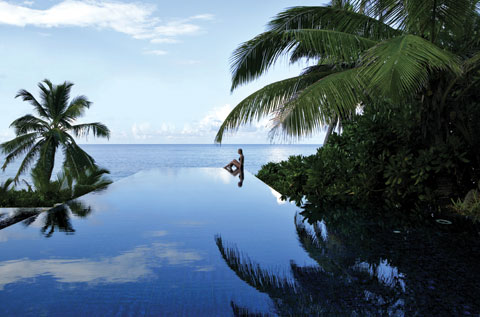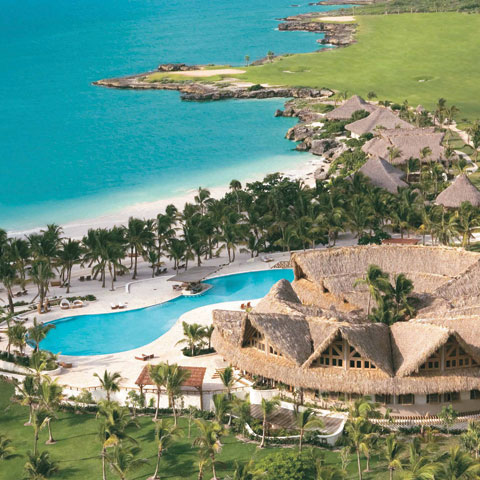Dream Destinations: Central America and The Caribbean
Central American and The Caribbean

[highlight_text] The Dominican Republic has slowly driven its image upmarket of late with luxury resorts like Oscar de la Renta’s Casa de Campo. [/highlight_text]
Central American: Panama
A man, a plan, a canal-Panama! It’s more than just a clever palindrome; it’s a savvy reality for the developers of this, one of Latin America’s hottest real estate markets. Historically, this country has been underappreciated by U.S. visitors, despite its accessibility (2.5 hours from Miami), the ubiquity of spoken English and the extent to which the American dollar is accepted currency.
The most popular regions for buying are Panama City, with its modern infrastructure and availability of all contemporary luxuries; Boquete, lush and mountainous and now home to a sizeable expat community; and the 100 or so Pearl Islands just off the Caribbean-side mainland.
Apart from its beauty, amenities and accessibility, Panama flourishes because it has fashioned itself as a Mecca for retirees or pensionados. Pensionados needn’t be senior citizens, but they do need to prove a steady income of $500 a month from either a governmental or a company source. Pensioners enjoy deep discounts on everything from entertainment to doctor visits. Even mortgage closing costs are half price for these lucky folks.
Non-retiree home buyers, too, are being wooed with remarkable incentives such as no property tax for 20 years if you buy or build a new home and no taxes on income earned outside the country.
Developers especially love the incentive that provides 20 tax-free years for investments in tourism, including construction materials and equipment and import taxes as well as real estate and income tax pursuant to building.
If anyone knows a good development deal when he sees one, it’s Donald Trump; his organization has made its foray into the Central American market with a new project, partnering with the Panama-based K Group to develop Trump Ocean International Hotel and Tower in Panama City.
The 2.4 million-square-foot, 65-story, mixed-use waterfront project is budgeted at $220 million and includes 300 hotel condos, 500 condos, retail shops, a casino, a 24-hour yacht club, a private beach club on the Pearl Island of Isla Contadora, a spa and meeting space.
“When we launched this project, prices of real estate in Panama went up 15 %,” says Roger Khafif, president of K Group. “We are selling this project at three times the market price due to the amenities we are offering.” The property was 60% sold in mid-August, and Khafif expects it to be sold out by the end of the year. The finished product should be ready by December 2009.
Local developers have also been quick to capitalize on their country’s burgeoning popularity. Panamanian Elias Mizrachi of PROCASA, for example, has been developing properties for nine years and has seen demand skyrocket. “Panama is the hottest area to develop at the moment,” he says. His latest project, SKY Waterfront Condominiums, is minutes from the Canal, overlooks the Bay and is walking distance to Panama City’s nightlife and banking. “We are almost 70 % sold,” he says, “With most of our buyers coming over from Canada, South America or the United States because of the market, the climate, the government and the overall lifestyle. It’s a beautiful place to live.”
His new condos promise five-star amenities such as concierge service, valet parking and a bellman along with views of both the bay and the skyline from private terraces; private elevators; 10-foot ceilings; marble floors; and high-speed Internet access. Every facet of the condos has been crafted with luxurious appurtenances, and residents will also have use of a 13,000-square-foot spa, a screening room, a fitness center, an entertainment deck and an infinity-edge rooftop pool with cabanas.
Panama City isn’t alone in attracting developers. The exclusive area of Costa del Este is now home to a planned 48-story oceanfront property called TEN TOWER. With only two apartments per floor and asymmetric double penthouses on the top floors, residents will feel that they are truly getting away from it all. Greeting them on arrival will be a 65-foot-high lobby with a water fountain. Each three-to-four-bedroom, 4,500-square-foot apartment will offer views of the skyline and the ocean. Double maid’s quarters will be included along with the usual living areas. Terraces, 10-foot-ceilings and floor-to-ceiling windows will be standard. Residents will be able to mingle in any of the public spaces, including the infinity pool, Jacuzzi, game room, gym, sauna, events hall, basketball court and dog park; buyers will even have a private entrance, separate from the guest entrance.
These three examples are but a few of the many planned residences being developed in a country where the canal serves as both a link to the familiar and a connection to the future.

Central American: Costa Rica
Costa Rica, with its easy, tico (laid-back) charm, its emphasis on la pura vida and its accessible pricing, has long been a lure for travelers who wanted to live well on a budget. With 94% of its descendents either directly descended from Spanish settlers or of mixed European ancestry, it’s attractive as a relatively inexpensive spot for English speakers to study Spanish through total immersion. And with its wealth of skilled medical personnel from all over, it was for many years something of an open secret among those who wanted to return “refreshed” from vacation. In fact, a 1991 survey by the University of Costa Rica found that more than 1/8 of the total visitors to Costa Rica came for an elective medical procedure.
Among real estate investors, Costa Rica was once a paradise of low-cost prospects. With a “rich coast” abutting both the Caribbean and the Pacific, Costa Rica certainly had no shortage of the beachfront property that makes it so desirable today; buyers could also enjoy mountainside properties and even the odd castle or two, remnants of the country’s European heritage.
“Real estate prices have been flat for several years now, making it a great opportunity to take advantage of the investment potential of Costa Rica,” Robert F. Davey, Century 21 Marina Trading Post owner, recently relayed to an online Costa Rica magazine. “Many North Americans and Europeans have relocated to and or invested in Costa Rica, and the signs of a strong reemergence of investors are here now.”
Still, as they have throughout the world, real estate prices have continued to rise steadily, particularly since 1998. A beachfront home can now top out at $3 million, and it’s no longer unusual to find condos at $250,000, while a ¼ acre beachfront lot can be upwards of $200,000. It’s not exactly St. Tropez yet, but it’s hardly third-world pricing, either.
The most popular areas for development and most expensive are located in the Central Valley, where the majority of the country’s 4 million inhabitants live, as well as along the Pacific coast.
It’s in the popular but less populated Playa Coyol region of the Central Pacific that Starwood Hotels, the Costa Rica-based Genesis development firm and the Miami-based Lionstone Development have linked arms to create the St. Regis Resort and Residences.
When it’s completed in 2008, the St. Regis Residences will offer 49 condo-hotel residences with one, two or three bedrooms, 42 private villas and nine estate homes. As is typical with condo-hotels, residents will have full access to all the appointments of the resort, including the St. Regis Butler service, an 11,000-square-foot Remède Spa and Fitness Center and various fine-dining restaurants.
Residents will enjoy the resort’s private beaches, but perhaps more spectacularly, they’ll be surrounded by the Ara Macao Wildlife Reserve, full of breathtaking plant and animal species-and all a mere 65 miles from the main airport in San Jose.

Caribbean: Dominican Republic
Once best known as a discount, all-inclusive getaway spot for mostly French and British tourists, the Dominican Republic has slowly driven its image upmarket of late with luxury resorts like Oscar de la Renta’s Casa de Campo.
Now, with the luxe development-in-progress that is Cap Cana, the D.R. is also poised to siphon off portions of the U.S. real-estate market, as pied-à-terre buyers who would traditionally have opted for spots like Puerto Rico or the Riviera Maya, Mexico, increasingly look to offerings like the D.R.’s Cap Cana.
Cap Cana, located about 10 minutes from the Punta Cana International Airport, is to date the largest luxury development in the Caribbean, both in terms of area-about 30,000 verdant acres that include beachfront and enough waterway for, eventually, a 500-slip mega-yacht marina-and in terms of investment: U.S. $1.5 billion.
The venerable “Golden Bear,” golf legend Jack Nicklaus, is on board to design not one but three 18-hole courses. The back nine holes of the first of these, Punta Espada, are ready for tee off as of July 2006.
One of several exciting real estate possibilities at Cap Cana is Green Village, a community of villas of various sizes. Studios measure about 1,600 square feet, one-bedroom suites about 2,900 square feet and two-bedroom villas, priced at $838,000, run about 3,450 square feet. In each case, the square footage includes an individual terrace and pool area. The two-bedrooms all include private gardens with Jacuzzis as well.
The aesthetic and structural themes of the villas are very much in keeping with the prevailing architecture of the area. The two-bedroom villas, for example, are connecting palapa-style structures with thatched-look roofs, surrounded by palm trees.
Green Village also offers buyers access to all the five-star amenities, services and outdoor activities of Cap Cana and its clubhouse – not to mention the year-round beauty of the Dominican Republic, a golfer’s and yachter’s paradise.












